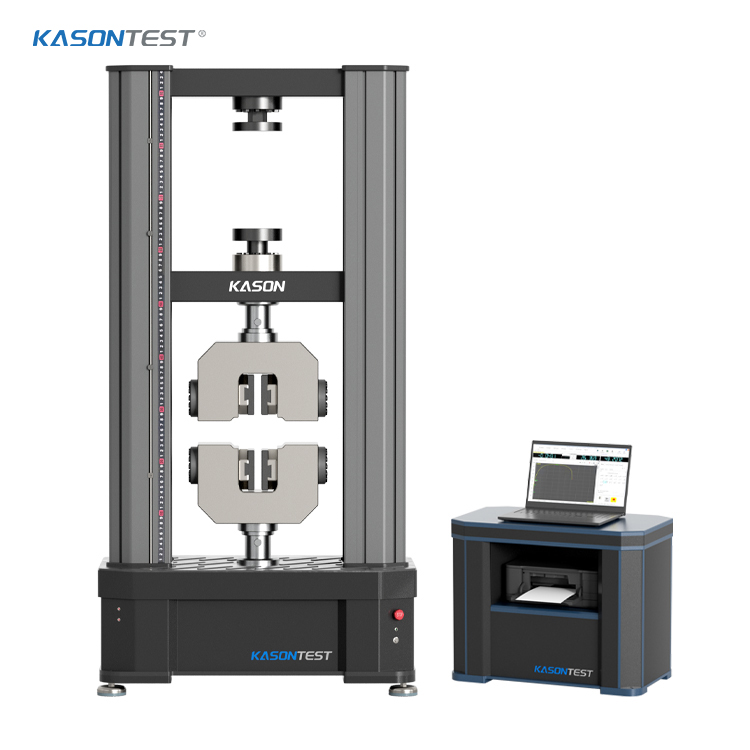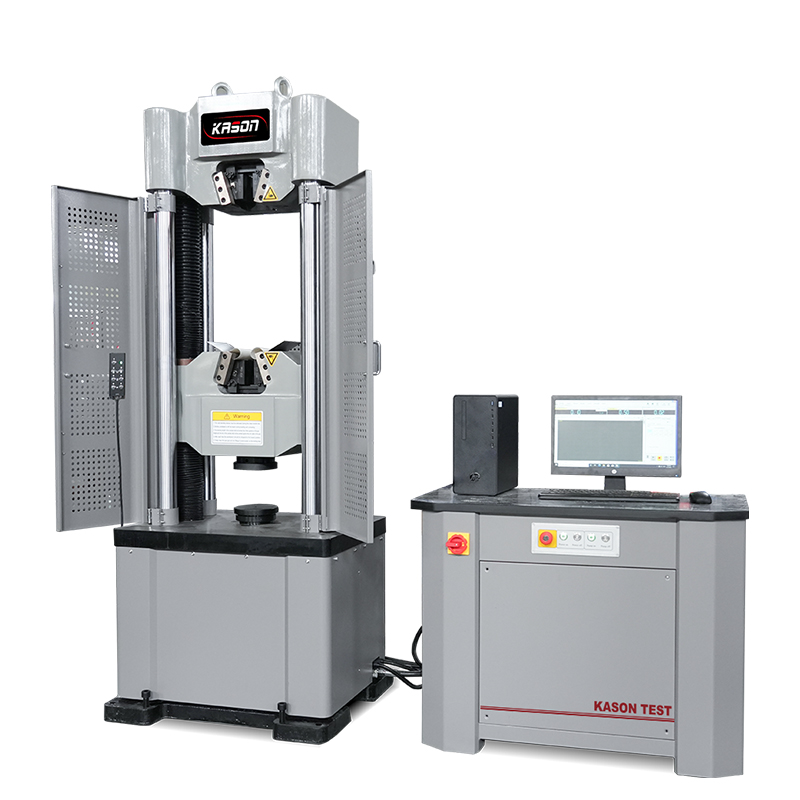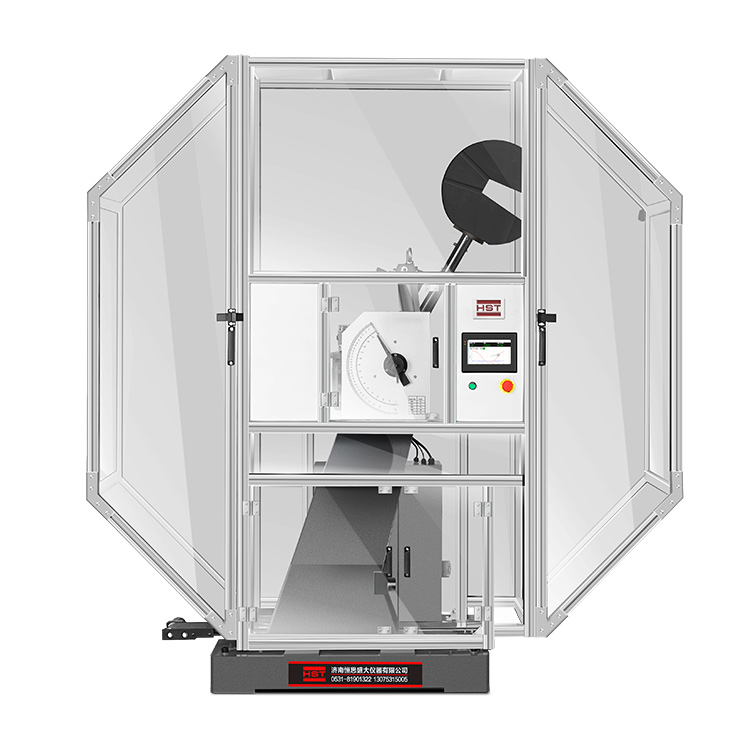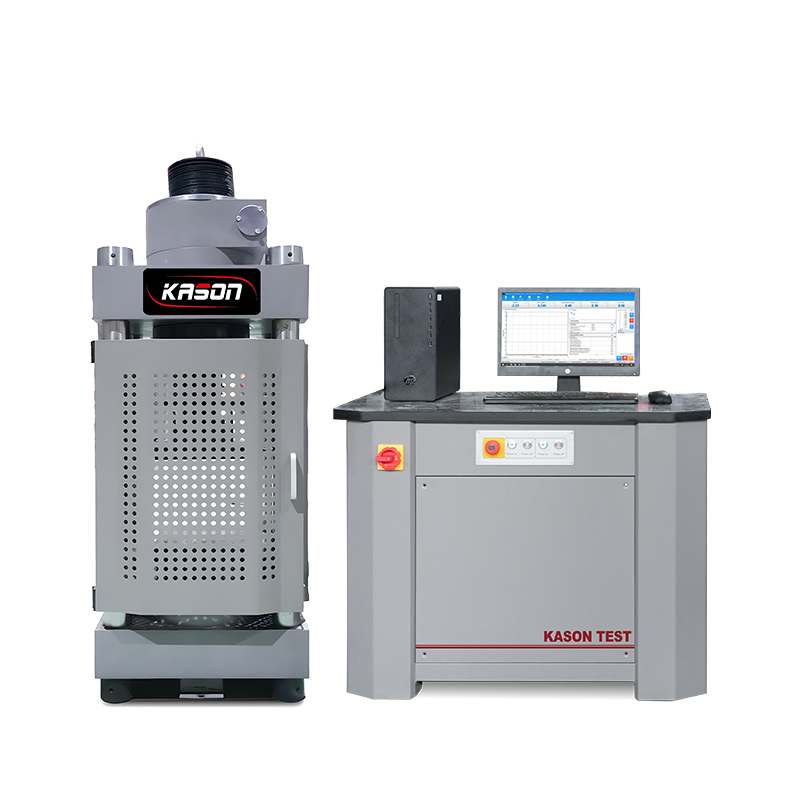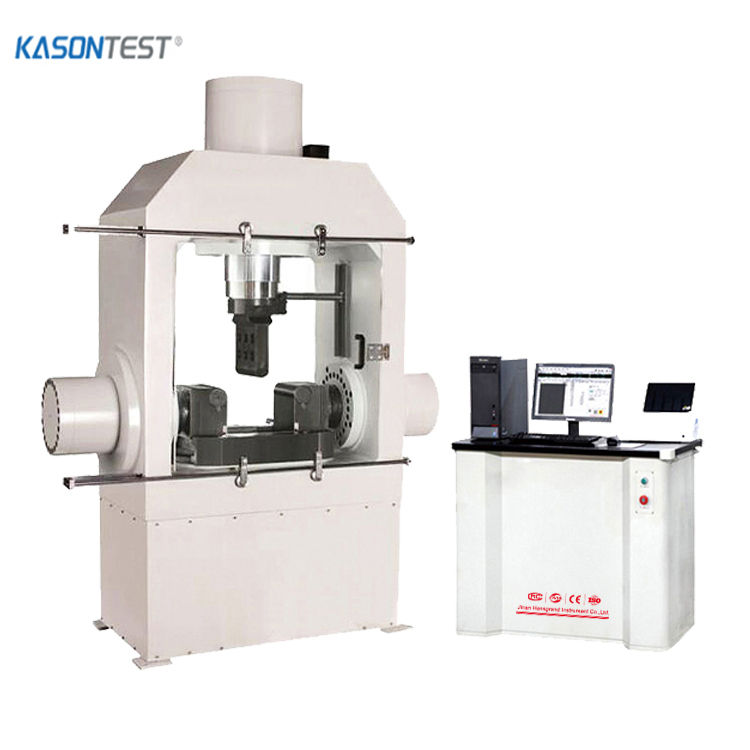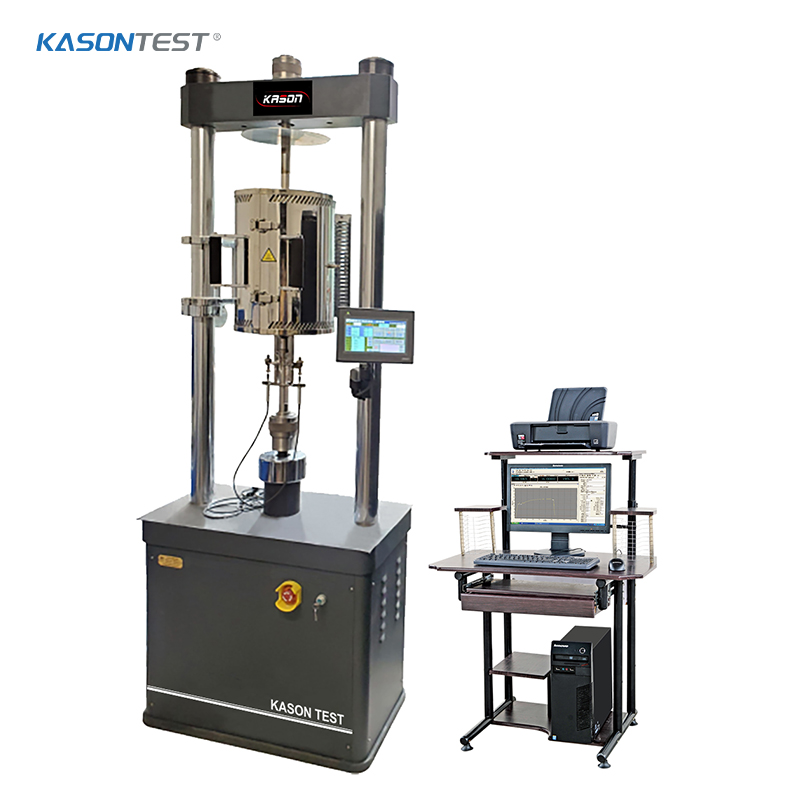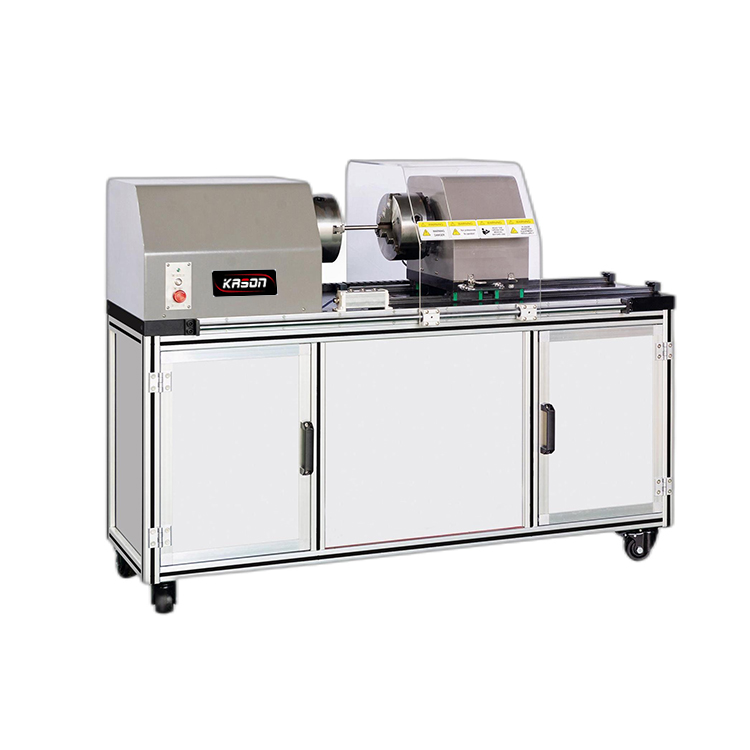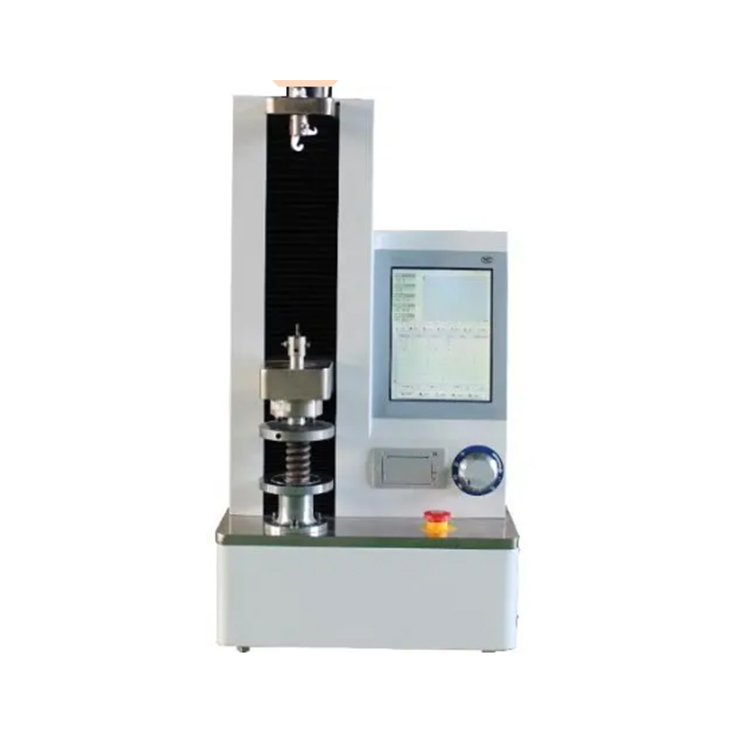ASTM E345-16 Standard Test Method for Tension Testing of Metallic Foil
ASTM E345 covers the tensile testing of metallic foil at room temperature. Measurements of tensile strength and elongation are crucial when comparing the performance of different alloys as well as during product development and QA.When to Use ASTM E345
ASTM E345 differs from other metal tensile testing standards in that it is designed to be used with thin, delicate specimens. Unlike ASTM E8/E8M, ASTM E345 allows specimen thickness to be determined by weight, in order to avoid damaging fragile specimens. Also, it permits elongation to be measured from crosshead displacement in instances when a contacting extensometer could damage the specimen or affect test results.
Extensometers
Both contacting and non-contacting extensometers meet the accuracy requirements of ASTM E345. Testing Machine are highly versatile non-contacting solutions and can be purchased with either the 16 or 35 mm FoV lens for Type A specimens or with any lens for Type B and C specimens. Non-contacting video extensometers are the best solution for measuring strain, as they can be used for testing high energy break specimens. Another excellent solution for all specimen types. In some cases, clip-on extensometers and crosshead displacement can be used for strain measurement.
ASTM E345-16 and Lithium Ion Batteries
ASTM E345 is an increasingly important testing standard due to the exploding popularity of lithium-ion batteries for electric vehicle production. Lithium-ion batteries use aluminum and copper foil as current collectors. When batteries are charged and discharged, the battery and its internal components need to be able to withstand any swelling that may occur. Because of this, understanding both the tensile strength and elongation at yield of metal foils are critical to the life and quality of a battery. As battery technology advances to include different materials, such as lithium silicon, the elongation of foil and other material will become even more important. Sometimes this will even lead companies to test for different alloys based on the specific makeup of a battery’s anode and cathode material.
Foils are required in extremely large volumes for battery production, and the push to electrify vehicles is causing demand for these materials to skyrocket. For this reason, manufacturers are prioritizing repeatability and throughput in their mechanical testing programs.
Materials Testing System
Due to the low forces involved in testing foils, We recommends a single column tabletop testing system s, typically paired with a 50 N load cell. A Precision Specimen Loader is also recommended, as it improves ease, safety, and results accuracy when loading thin foil specimens into universal testing systems.
ASTM E345-16 Standard Test Method for Tension Testing of Metallic Foil
foil testing
When to Use ASTM E345
ASTM E345 differs from other metal tensile testing standards in that it is designed to be used with thin, delicate specimens. Unlike ASTM E8/E8M, ASTM E345 allows specimen thickness to be determined by weight, in order to avoid damaging fragile specimens. Also, it permits elongation to be measured from crosshead displacement in instances when a contacting extensometer could damage the specimen or affect test results.
Extensometers
Both contacting and non-contacting extensometers meet the accuracy requirements of ASTM E345. We are highly versatile non-contacting solutions and can be purchased with either the 16 or 35 mm FoV lens for Type A specimens or with any lens for Type B and C specimens. Non-contacting video extensometers are the best solution for measuring strain, as they can be used for testing high energy break specimens. Another excellent solution for all specimen types. In some cases, clip-on extensometers and crosshead displacement can be used for strain measurement.
ASTM E345-16 and Lithium Ion Batteries
EV battery content hub icon
ASTM E345 is an increasingly important testing standard due to the exploding popularity of lithium-ion batteries for electric vehicle production. Lithium-ion batteries use aluminum and copper foil as current collectors. When batteries are charged and discharged, the battery and its internal components need to be able to withstand any swelling that may occur. Because of this, understanding both the tensile strength and elongation at yield of metal foils are critical to the life and quality of a battery. As battery technology advances to include different materials, such as lithium silicon, the elongation of foil and other material will become even more important. Sometimes this will even lead companies to test for different alloys based on the specific makeup of a battery’s anode and cathode material.
Foils are required in extremely large volumes for battery production, and the push to electrify vehicles is causing demand for these materials to skyrocket. For this reason, manufacturers are prioritizing repeatability and throughput in their mechanical testing programs.
Materials Testing System
Due to the low forces involved in testing foils, we recommends a single column tabletop testing system , typically paired with a 50 N load cell. A Precision Specimen Loader is also recommended, as it improves ease, safety, and results accuracy when loading thin foil specimens into universal testing systems.
Grips
ASTM E345 calls for the use of wedge action grips for testing long and ductile specimens. When paired with serrated jaw faces, these grips can provide an adequate gripping solution for most testing. However, as foils are generally tested in very high volumes, some of the most critical aspects to consider when choosing a gripping solution are optimizing repeatability and throughput. Additionally, because of the delicacy of these specimens, it is important that you choose grips that help to avoid slippage and maintain an even stress distribution throughout testing. For these reasons we recommend pneumatic side action grips which make loading specimens quicker for added throughput. These can be paired with quick-change faces to allow you to easy move between serrated, rubber, or flat gripping surfaces. The use of pneumatic grips also ensures that a repeatable gripping pressure is applied to each specimen for every test, avoiding the over/under tightening possible with wedge grips. Finally, pneumatic side action grips can be augmented with specimen alignment aids to make specimen insertion easier and to reduce the risk of damaging them prior to testing.
Type A specimens and calculation should comply with those in ASTM E8/E8M and can be machined. Type B specimens, particularly with soft or thin materials, should be sheared or cut. Specimen thickness can be measured with a micrometer or by weighing in accordance with ASTM E252.
Both contacting and non-contacting extensometers meet the accuracy requirements of ASTM E345.We are highly versatile non-contacting solutions and can be purchased with either the 16 or 35 mm FoV lens for Type A specimens or with any lens for Type B and C specimens. Non-contacting video extensometers are the best solution for measuring strain, as they can be used for testing high energy break specimens. Another excellent solution for all specimen types. In some cases, clip-on extensometers and crosshead displacement can be used for strain measurement.

